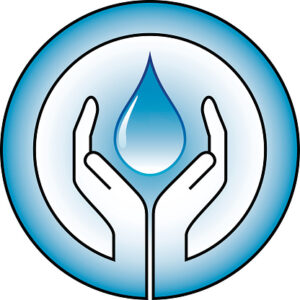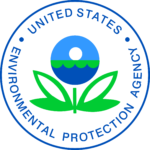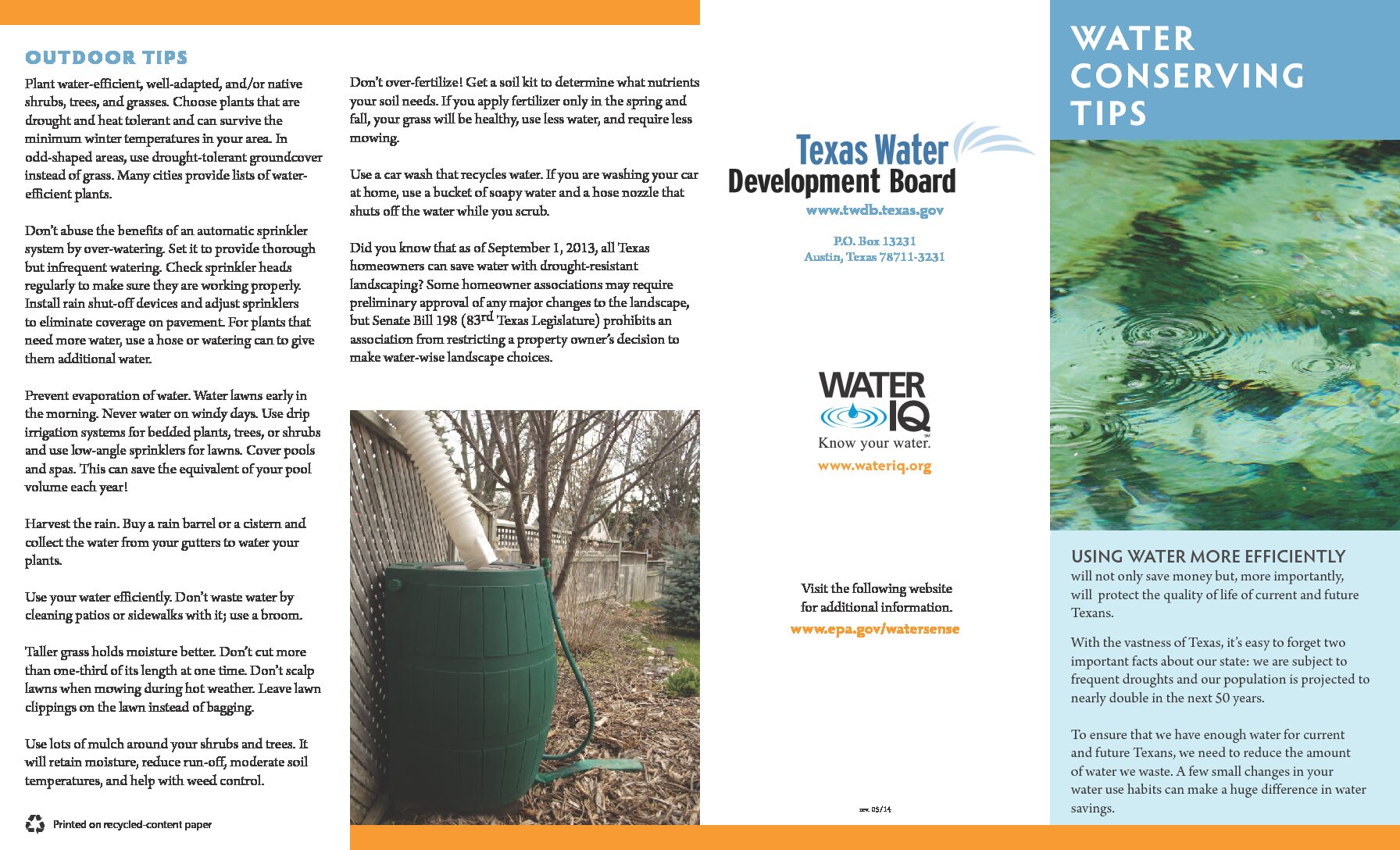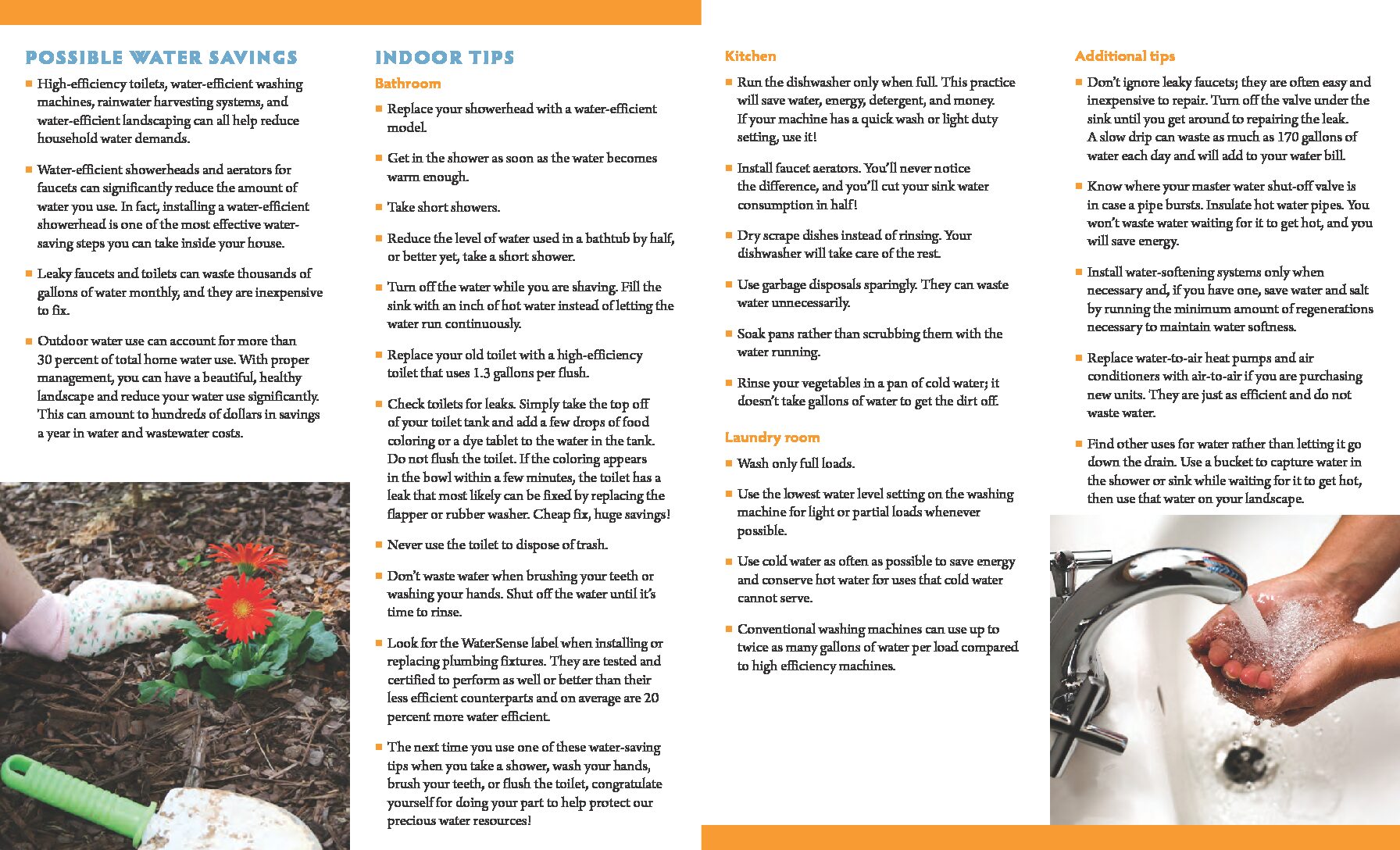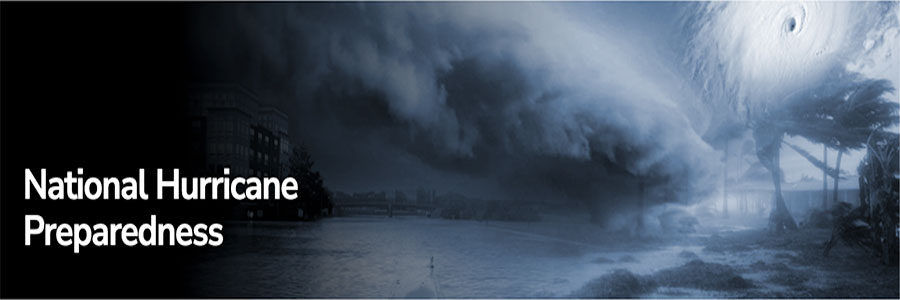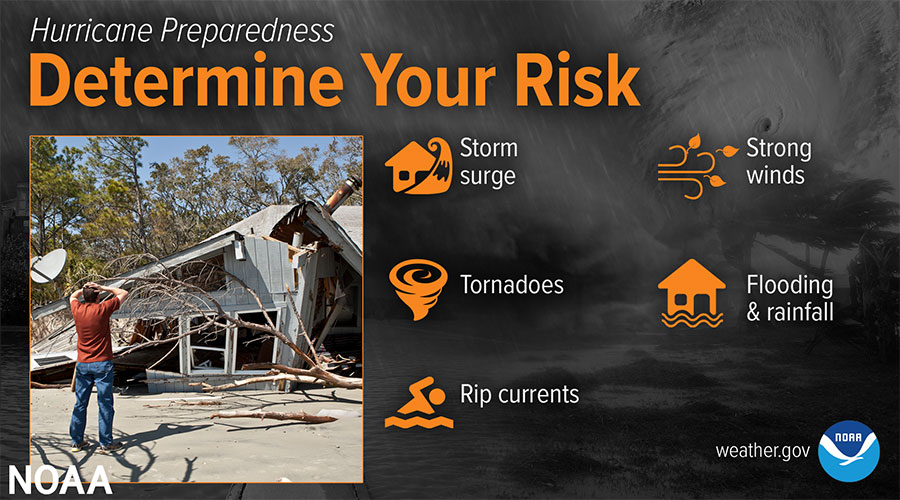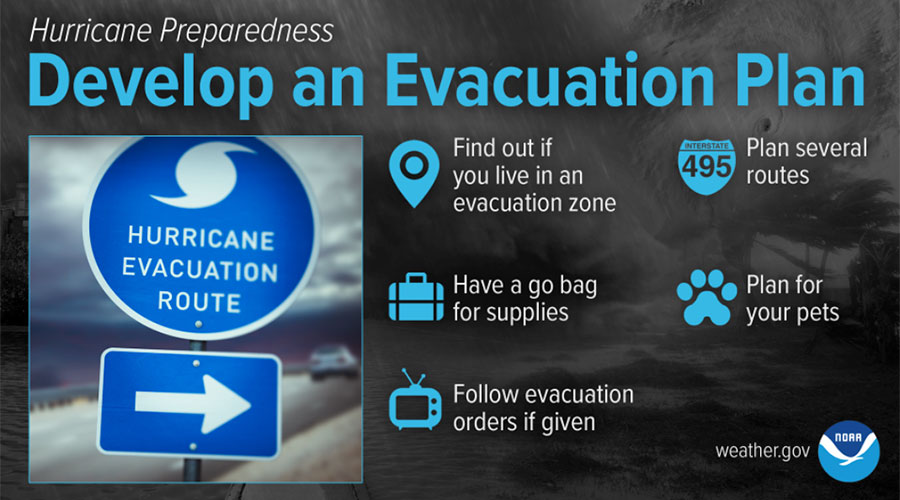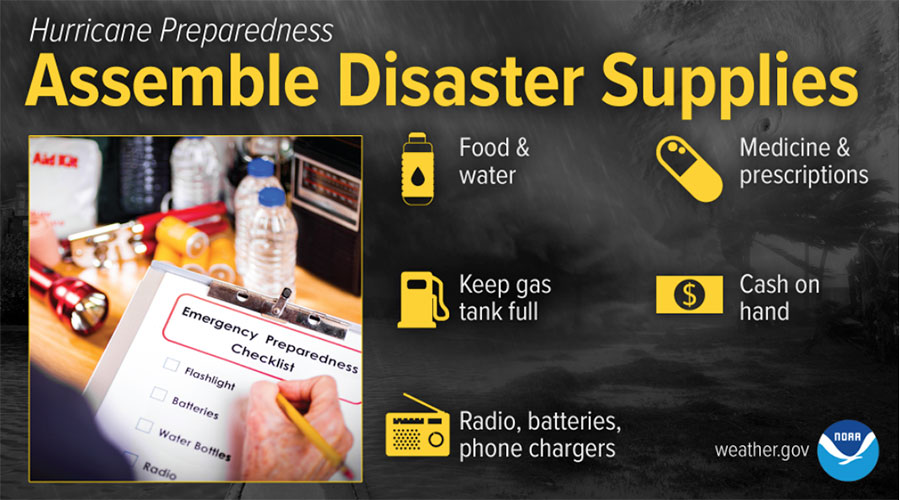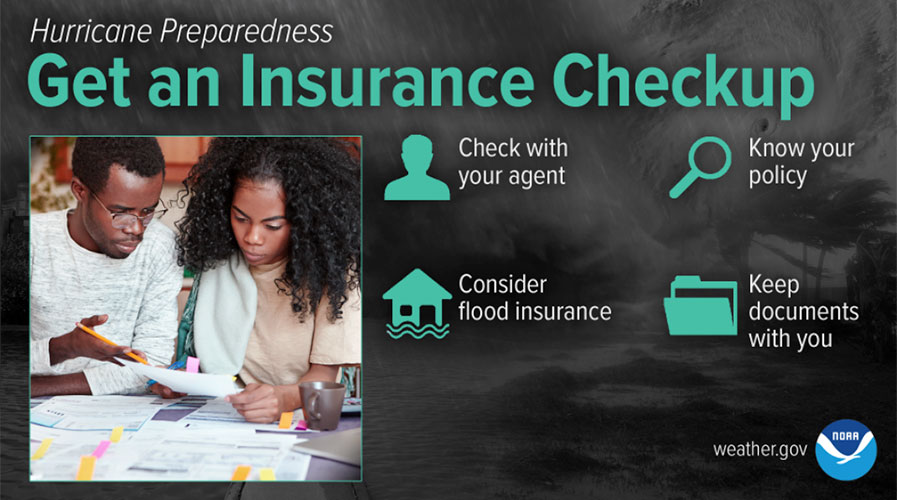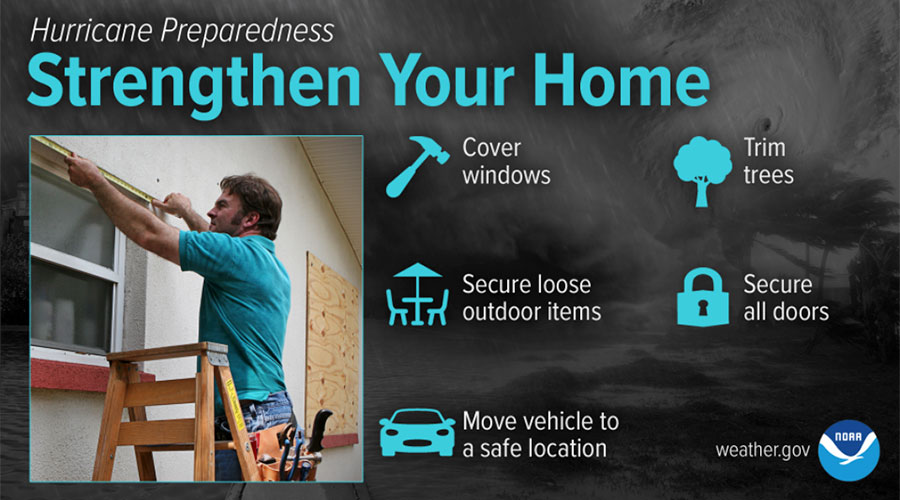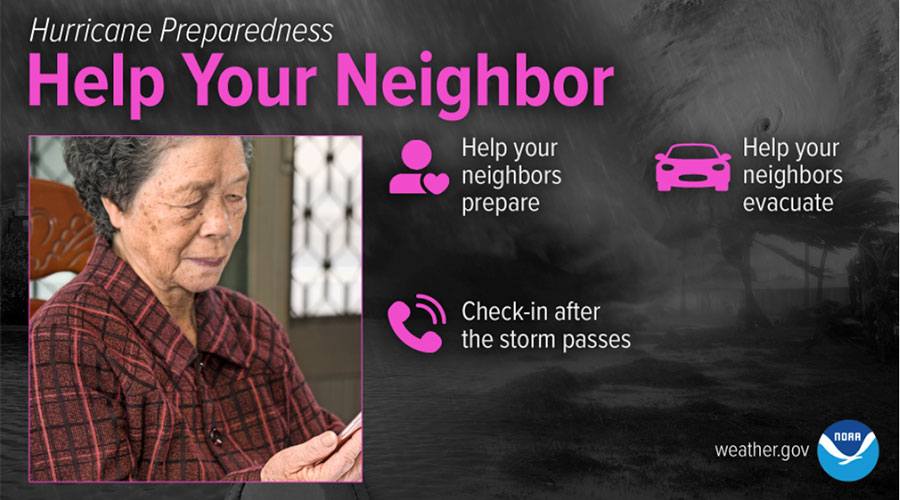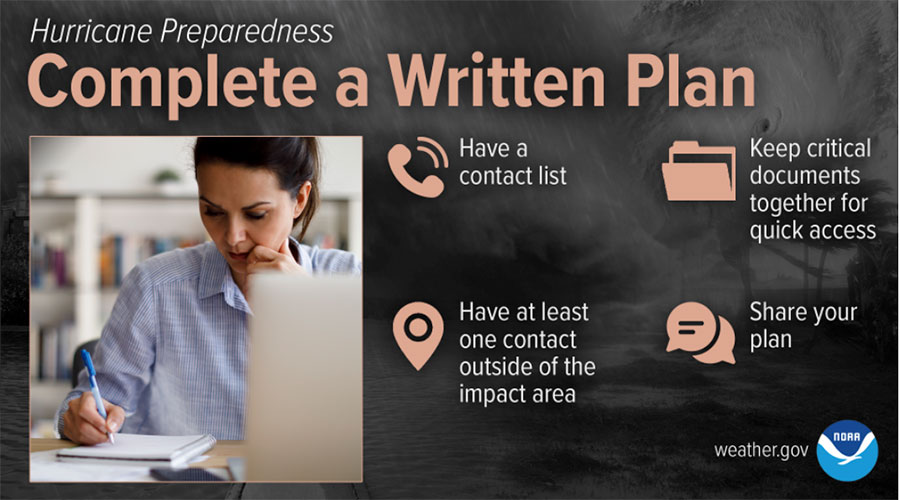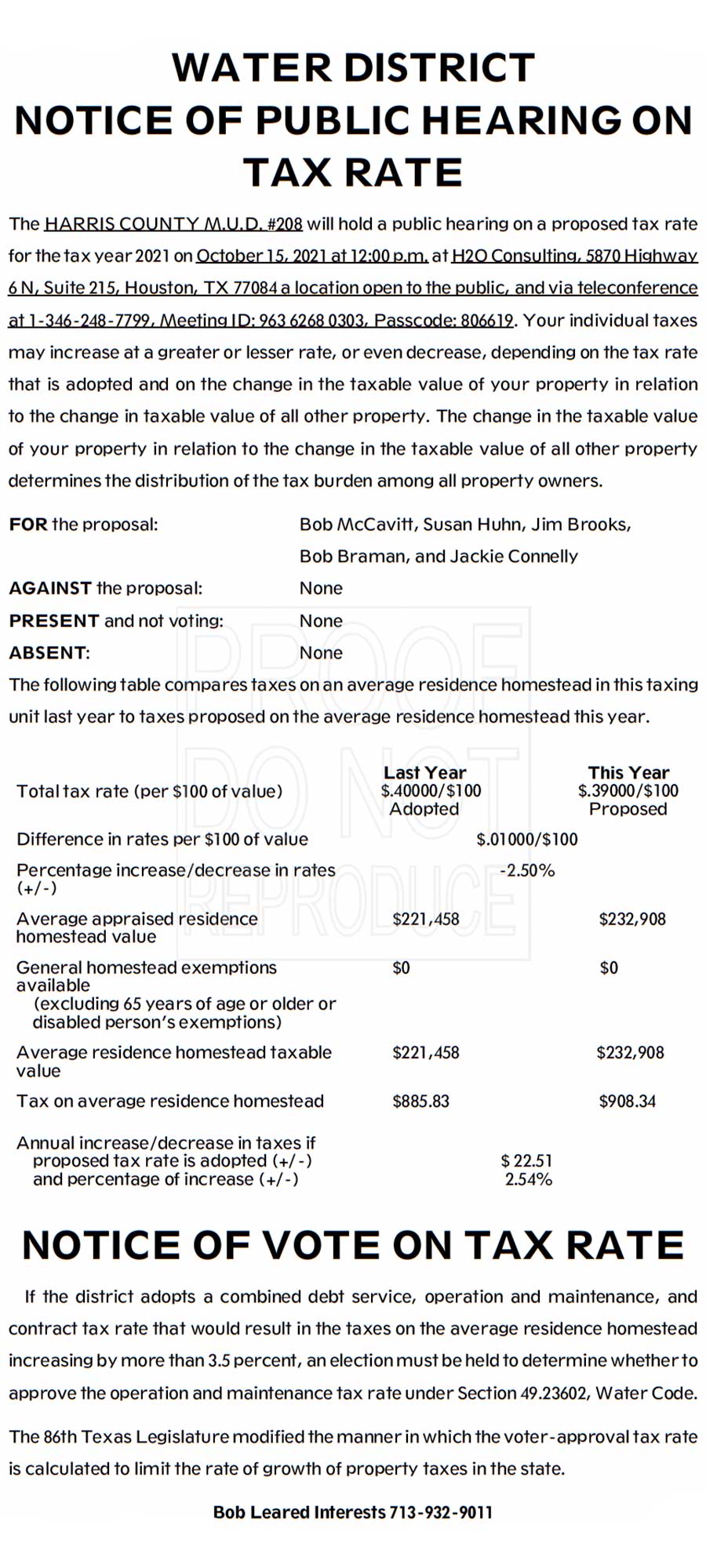2022 TAX RATE SET
The Board of Directors of Harris County MUD 208 (the district) voted to decrease the 2022 MUD Property Tax Rate to $0.36 per $100 valuation. The total tax rate consists of $0.07 per $100 valuation to pay the District’s debt service and $0.29 per $100 valuation to fund maintenance and operation expenditures for the next year. Please keep in mind this rate is for the district only. Other entities, including the county, school district, hospital district, etc., set their own rates.
The Board of Directors also authorized Bob Leared Interests, the tax assessor-collector for the district, to mail duplicate tax statements in January 2023. These statements will be mailed to homeowners whose original tax statement was requested by and mailed to a mortgage company AND remains unpaid at the time of the January mailing. If you receive a DUPLICATE TAX STATEMENT, this is your reminder to contact your mortgage company to ensure their timely payment of your MUD taxes by January 31, 2023. If you receive a statement, but escrow your taxes, it is your responsibility to forward the tax statement on to your mortgage company.
**This year the Harris County MUD #208 tax statements contain a QR code. When scanned with a smartphone this QR code will take you directly to the account on the tax assessor website and payment can be made at that time.**
You can view, pay, and print receipts for your MUD tax account online at www.bli-tax.com or through the Bob Leared Interests link on our website, www.harriscountymud208.com There is an additional processing fee when making online payments. In addition to paying through the website, you can pay the district taxes by phone, by calling OPAY Customer Service at (800)487-4567 between the hours of 7:00 am and 7:00 pm CST. You must tell the representative you need to pay your TEXAS taxes. You will need your account number which begins with “229”. There is an additional processing fee when making payments by phone.
If you have not received your 2022 Harris County MUD 208 tax statement by the end of November, and you are unable to locate your account online at www.bli-tax.com, please contact the tax assessor-collector at 713-932-9011 to discuss your tax account.
BOB LEARED IS NOT AFFILIATED WITH DOXO.COM

